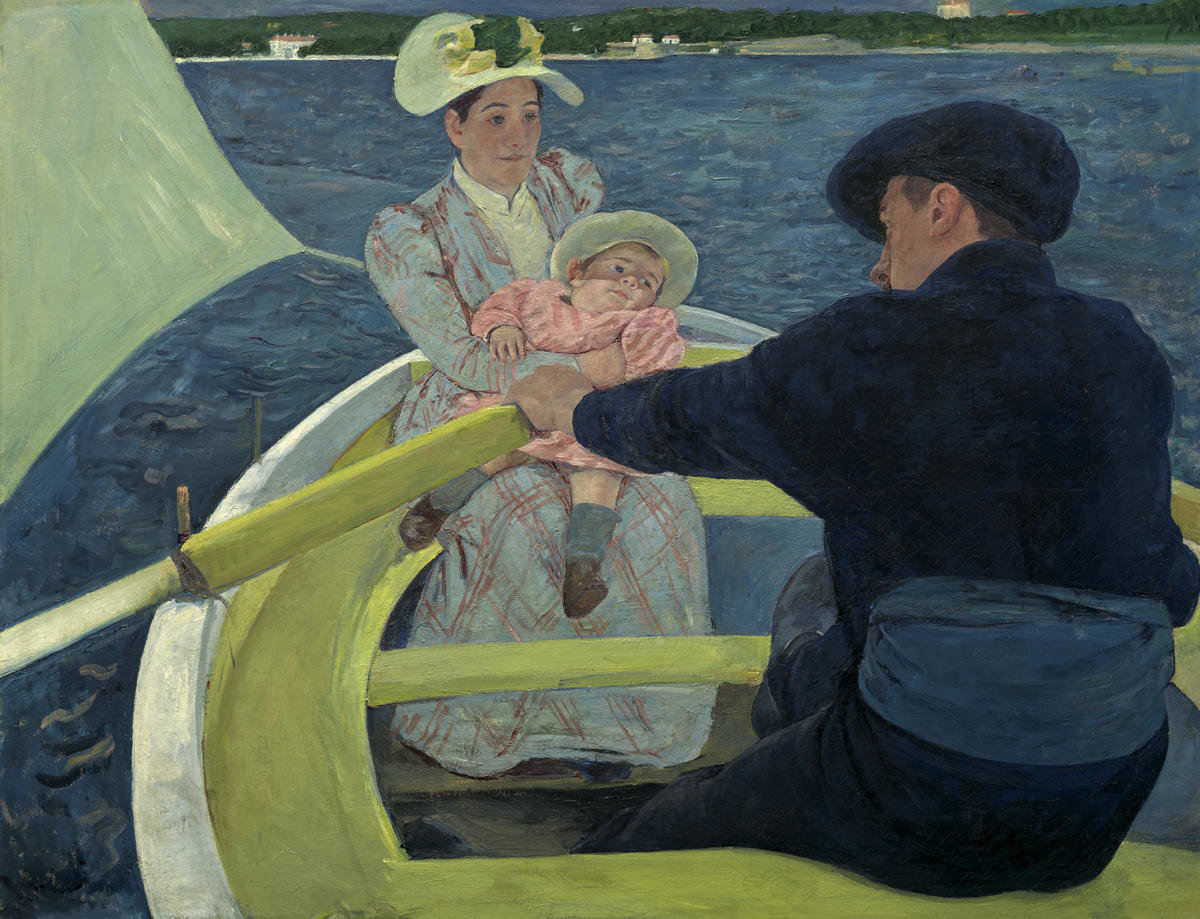The National Gallery of Art, in Washington, D.C., Lithograph, «The Boating Party» by MARY 2024 CASSATT (1844-1926), Framed, Under Glass
The National Gallery of Art, in Washington, D.C., Lithograph, «The Boating Party» by MARY CASSATT (1844-1926), Framed, Under Glass
Condition: MINT, Wood Frame,
Measurements, Approx.:
Image:
Width:………………………11 inches
Height:……………………..8½ inches
Frame:
Width:………………………15½ inches
Height:……………………..12½ inches
Weight:………………………………………1 Lb 13¾ OZs
<<>><<>><<>><<>>
Comes from smoke free home
The Boating Party is an 1893 oil painting by American artist Mary Cassatt. It has been in the collection of the National Gallery of Art since 1963. Cassatt painted The Boating Party during the winter of 1893–1894 in Antibes, on the French Riviera.
Artist:……………..Mary Cassatt
Dimensions:……2′ 11″ x 3′ 10″
Created:…….…..1893–1893
Location:……..…National Gallery of Art
Medium:………...Oil paint
Support:…….…..Canvas
Where is the Boating Party by Mary Cassatt?
The National Gallery of Art, and its attached Sculpture Garden, is a national art museum in Washington, D.C., United States, located on the National Mall, between 3rd and 9th Streets, at Constitution Avenue NW.
The painting is thought to show the influence of Italian Renaissance painter Paolo Veronese on Renoir's style, in particular, The Wedding Feast at Cana (1563), one of Renoir's favorite Veronese paintings at the Louvre, which depicts a similar banquet theme to that of the Luncheon.
Mary Cassatt's The Boating Party shows important changes in art and culture near the end of the 19th century. The Boating Party depicts evolving cultural norms around women and sport, and the rise of womenswear separates. Through Cassatt's strong graphic shapes, we can see how Impressionist painting evolved to become more experimental and geometric in the 1890s.
ABOUT THE ARTWORK
Mary Cassatt was an American artist born in 1844. She studied painting in France and Italy, and eventually made 2024 Paris her permanent home in 1874. Cassatt was a member of the Impressionists and was close friends with Edgar Degas (Weinberg). She is known for frequently painting mothers and their children, and her works allow the viewer to see an intimate glimpse into women's lives in the late Victorian era (Mowll Mathews).
The Boating Party was painted in Cassatt's mature period, in which she implemented strong colors and bold, geometric compositions (Mowll Mathews). During the late 19th century, Japanese prints became popular in France and they clearly influenced Cassatt's technique. She appropriated some of the stylings of ukiyo-e printmaking, such as flat color, dynamic cropping, and higher vantage points. These elements can be seen in Kitagawa's Boating Party with Children. Cassatt is known to have been exposed to ukiyo-e in both 1891 and 1893 (Jordan). Her painting The Child's Bath employs the ukiyo-e aesthetics, which “epitomizes Mary Cassatt's absorption of Japanese methods and her ability to translate them into her own mature style” (National Gallery of Art).
The Boating Party was the centerpiece of Cassatt's exhibition in New York in 1895 (National Gallery of Art). While critics approved of the softer, more traditional style of her earlier paintings, many disapproved of her works from the middle of her career (New York Times 4). In multiple reviews of the exhibition, the flat colors and relative sharpness of her work were described as unfeminine. On April 18, 1895, the New York Times described her paintings:
“These last are frequently hard, crude, and have a tendency towards the brutal. Inharmonious masses of uncomplimentary color are brought side by side and shock the eye. A rude strength, at times, out of keeping with the subject, is noticeable, and takes away in a measure from the charm of femininity.”
According to the MFA Boston, images of figures while boating are a common motif in Impressionist genre painting. We can see another example of a mother and child being depicted while boating in this painting by Edmund Tarbell. In comparison with Tarbell's painting, we can see Cassatt's ability to depict the lives of Victorian women with a strong sense of honesty. The mother in Cassatt's painting has agency; she's engaged in boating, and it appears as if she's settling herself against the motion of the boat. As opposed to Tarbell, Cassatt paints the child with more movement. The infant in The Boating Party looks to be watching the water go by and attempting to wriggle out of their mother's arms. Although Cassatt never had children of her own, her status as an upper-middle-class Victorian woman meant that she was highly familiar with more private moments between mothers and their children (Mowll Mathews).
In The Boating Party, we can see both societal and artistic change that occurred in the 1890s. Cassatt's painting shows interesting developments within the Impressionist movement through her use of space and color. Through the clothing represented in the piece, we can see the evolution of societal norms in the period. (See Picture #10)



